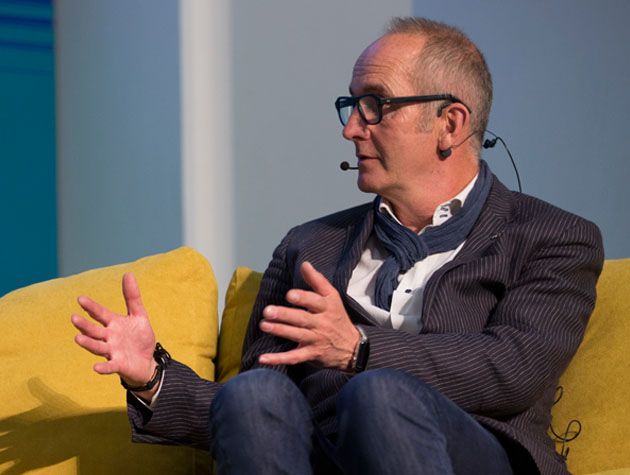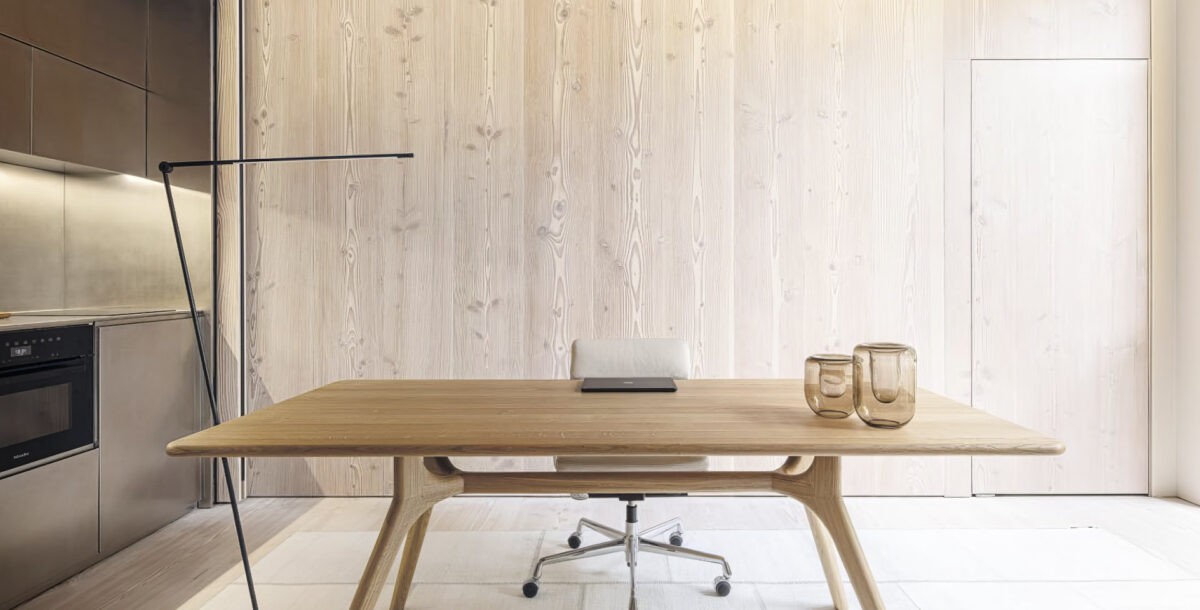Kevin McCloud on building eco homes
The Grand Designs presenter on sustainable housing, indoor air quality and the benefits of building healthy homes
Grand Designs magazine editor Karen Stylianides talks to designer and presenter Kevin McCloud about eco homes, sustainable construction and the benefits of building a super healthy home.
Have you seen the interest in eco homes develop over time?
In terms of sustainable construction, I think it’s become so mainstream now – partly due to planning requirements. Also, I think most of us now look at the cost of fuel and heating our buildings and think that’s a thousand quid minimum, I could use that for holidays or beer if I had a properly insulated, properly ventilated sustainable house. So, if you’re building new it’s a bit of a no-brainer and if you’re refurbishing an existing property, it’s a bit of a no-brainer.
Whether people embrace in one hand, living ecology and super-low carbon lifestyles with zero jet travel and an electric car and bicycles is another matter. I do think anybody building first of all is invested in low energy consumption and actually most people are pretty interested in the idea of getting best value for money, in terms of the materials because building consumes vast quantities of materials. You learn very quickly to build a slightly smaller home is much more convenient, has much lower impact and it’s a sort of short hop, if you like, from energy consumption to resources.
In other words, so many people who start are thinking, ‘I just want to reduce my bills’ and they actually very quickly end up saying, ‘you know what? I can’t cope with much more stuff and I want to build something slightly more modest.’ So, I think from my point of view, I’m in a very comfortable place watching people do that and I’m quite interested in that conversion that people go through rather than simply making films about die hard dive-in-the-wall, nero-beard green champions and enthusiasts.

Photo: Alistair Veryard
So self-building could lead the way for the wider building industry?
Absolutely, self-builders are our great experimentalists. They are heroes and our champions because they sell their grandmother to raise the money to build something which is often very experimental. They’ll push an idea out there or invest in a piece of technology that no one else has tried – and hats off, I’m absolutely a-gone and in awe of the way they do that. What you see them do is what the more enlightened developers will be doing in five years – if it works – and what perhaps social housing sector will be doing in ten. Now it’s quite common to find a social housing project, super-insulated with managed ventilation and air sourcing pumps which we think of as sort of standard stuff but ten years ago, fifteen years ago, nobody had heard of it.
Is it more important to think about the fabric of the building or renewable energy saving measures?
Well, I have a business and we build homes and we have what we call a ‘fabric-first approach’, which is about spending the money on the bones of the building. So, I think it’s pretty clear to me that we should be spending money on… the quality of the core fabric, the insulation, the air-tightness of the building and then putting in managed ventilation which is, for somebody like me who’s asthmatic, enormously helpful at introducing fresh air into the building.
Then just automatically the heating bill drops to a fraction of what it otherwise would be and then you need less technology anyway, less bolt-on stuff anyway and after all that… I just look at that high-tech stuff and think that’s more stuff to go wrong. It’s okay if you’re an engineer and you can spend your evenings mending it, but it’s best to take the fabric-first approach and then have the minimum amount of extra intervention that’s complex. Something like mechanical ventilation cover is really simple, it’s really straight forward, so I’d always try and keep it simple.
If you create an air-tight property then you’ve got to bring fresh air in, but it’s a balance isn’t it?
You can, with Mechanical Ventilation with Heat Recovery (MVHR). The difference with MVHR is it captures all of the heat in the waste air and 95% of it gets recycled into the fresh incoming air. It doesn’t capture the air itself but the heat, and when you open the window of course, you lose all the heat.
Now, there are times in the year like in the spring when you want to lose some heat, you want to purge the building and let the fresh air in, [that’s] absolutely fine. It’s just that MVHR systems come into their own and at those times of year they maintain in lower levels of humidity, fresher air, more air changes, it’s filtered air.
What would you say is good for allergies?
We’re currently filming a project going out in autumn which is on a family in South London who are building a super healthy house. The reason for doing is that they’ve got two kids who are very allergic to all kinds of environmental triggers, from mould and spores to synthetic solvents and perfumes and so forth. These kids are going to be living in a house which has got a minimum amount of PCBs and parabens and volatile organic compounds. I think it’s going to be a really interesting house with managed ventilation, so everything is super filtered and it should make a big difference to the quality of their lives.
What was really interesting about this was talking to their mum and asking her about their lives because obviously they go to school all day, they’re exposed to the real world. She says, the moment they come home is something of a battlefield for them where they’re exposed to mould, spores, pollen and allergens. What we’re trying to do here is create a kind of neutral space, a little bit like a kind of sterile wing in a hospital, where we can put them. They can come home and they can spend their hours asleep breathing in really clan fresh air. It gives them that kind of breathing space and opportunity for their health to bounce back, for their immune systems to recover.
Is there a movement towards that recognition of a healthy home?
Well, it’s automatic isn’t it? The moment you start to insulate you then shift your attention from insulation and the air-tightness to the quality of the air inside the building.
If we need to take of both aspects – rising allergies and health problems – shouldn’t it start at home?
Yeah, well interestingly enough – if I’m not mistaken – the green movement started in Scandinavia in the 1960s as an e-movement in housing, certainly out of concern for indoor air quality. So funnily enough, humans came first because in Scandinavia, where it can be cold for some much of the winter, their houses are shut up and the idea of managed ventilation became very important in order to really improve the environment and air quality for people for so much of the year – it’s really important.









